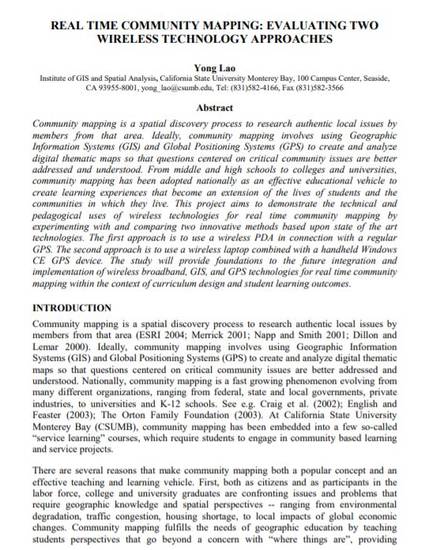
Article
Real Time Community Mapping: Evaluating Two Wireless Technology Approaches
Proceedings of the 12th International Conference on Geoinformatics − Geospatial Information Research: Bridging the Pacific and Atlantic
(2004)
Abstract
Community mapping is a spatial discovery process to research authentic local issues by members from that area. Ideally, community mapping involves using Geographic Information Systems (GIS) and Global Positioning Systems (GPS) to create and analyze digital thematic maps so that questions centered on critical community issues are better addressed and understood. From middle and high schools to colleges and universities, community mapping has been adopted nationally as an effective educational vehicle to create learning experiences that become an extension of the lives of students and the communities in which they live. This project aims to demonstrate the technical and pedagogical uses of wireless technologies for real time community mapping by experimenting with and comparing two innovative methods based upon state of the art technologies. The first approach is to use a wireless PDA in connection with a regular GPS. The second approach is to use a wireless laptop combined with a handheld Windows CE GPS device. The study will provide foundations to the future integration and implementation of wireless broadband, GIS, and GPS technologies for real time community mapping within the context of curriculum design and student learning outcomes.
Disciplines
Publication Date
June, 2004
Citation Information
Yong Lao. "Real Time Community Mapping: Evaluating Two Wireless Technology Approaches" Proceedings of the 12th International Conference on Geoinformatics − Geospatial Information Research: Bridging the Pacific and Atlantic (2004) p. 69 - 76 Available at: http://works.bepress.com/yong-lao/4/
